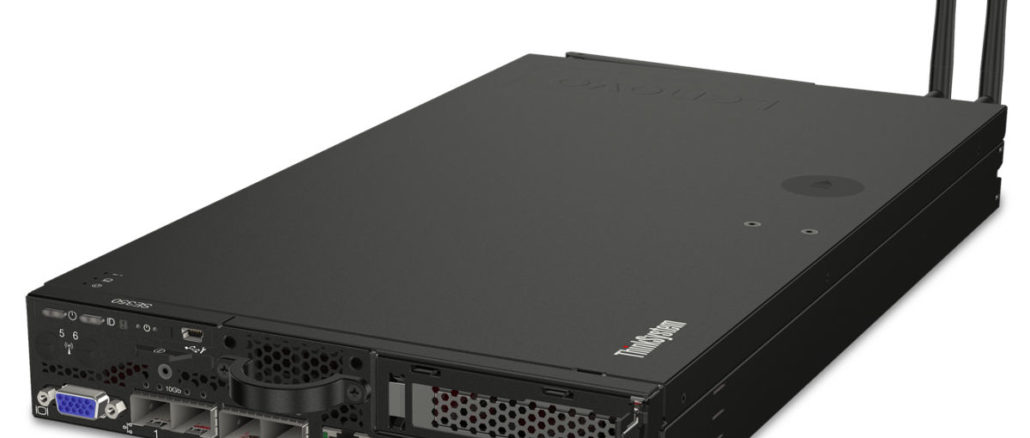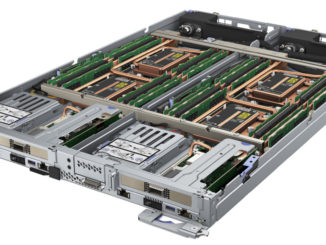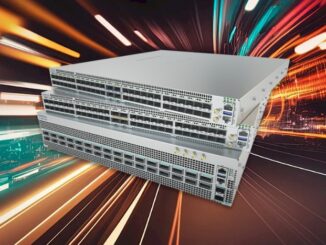
Enterprises and tech vendors alike for the past few years have been talking about the growing importance of the edge in the increasingly distributed IT environment. It’s at the edge where more data is being generated and stored, and organizations are feeling the need to process, analyze and act on the data at the edge — closer to where the data is being created — to remain competitive and more quickly get new products and services out to their customers.
The more data processing that can be done at the edge, the less data needs to be sent back to the cloud or central datacenter, which means businesses can not only glean critical insights much faster but also don’t have to worry as much about the latency and costs involved with running huge amounts of data over the network.
The edge will only grow in importance. IDC believes that by 2023, more than half of all new IT infrastructure will be deployed at the edge. At the same time, Gartner says that by 2025, 75 percent of enterprise-generated data will be created and processed outside of traditional datacenters or the cloud.
Given that, it’s no wonder that infrastructure vendors like Dell Technologies and Hewlett-Packard Enterprise are putting a sharp focus on the edge — from the hardware and software they’re creating to the emphasis on consumption models like as-a-service.
The rise of artificial intelligence (AI) in processing and analyzing data also is driving the rapid growth at the edge in such industries as retail, according to Charles Ferland, vice president and general manager of edge computing and telecom at Lenovo’s Infrastructure Solutions Group (ISG). In 2020 the OEM saw a lot of interest and proof-of-concepts (POCs) in edge computing; since the beginning of 2021, there is a sharp increase in real projects going to market, Ferland tells The Next Platform.
At the edge, size is important. So is speed, flexibility, resiliency and security. Deployments need to be small enough to fit in closets in retail stores or on the floors of manufacturing facilities or oil rigs. The surrounding environment can be tough, so they need to be able to resist such challenges as extreme temperatures and vibration and they need to protect the data from cyberattacks or from people stealing the systems themselves. And key to all this is automation, he says.
“Because of edge AI, what we understand from our customers is there’s less personnel or staff to be available to work, so they need to rely on automation of some of the tasks,” Ferland says. “They’re looking at deploying systems that will automate inventory management, for example, where cameras will be monitoring the shelves and these sort of things. [They want to] automate those tasks so that the video input is capturing the stores, but not backhauling this into a central datacenter or somewhere in the cloud. If you have 16 cameras in the store, that’s a lot of video feed that you need to uplink and the bandwidth that it would consume is either unavailable in many of the locations or extremely expensive. Therefore, we have the edge servers that are processing the video feed, delivering the insight that says, ‘You need to put four more boxes of that type of soap’. The insight goes back into the inventory database. All of the video feed doesn’t have to be backhauled all the way to a central location. It’s not really about edge, about low latency and all of this. Low latency is important, but in many of the use cases in retail, it’s simply about processing the information right then and there to avoid a bandwidth issue.”
The edge will be a topic when Lenovo’s virtual Tech World ’21 kicks off September 8. At the show the company’s ISG will talk about a partnership with VMware to offer an edge solution that offers VMware software preloaded onto Lenovo’s ThinkSystem SE350 edge servers. At the same time, the OEM will unveil enhancements to its Lenovo Open Cloud Automation software that will deliver a single interface for automating the planning, deployment and management of physical and virtual infrastructure running cloud applications in the datacenter and at the edge.
As we’ve noted, the edge isn’t new to Lenovo. Last year, the company partnered with Microsoft to bring the Azure Stack — the software giant’s offering to bring its cloud services to the datacenter — out to the edge.
Lenovo launched the SE350 in 2019 with the edge and Internet of Things (IoT) in mind. The 1U system a half-width, short-depth server powered by Intel’s Xeon D-2100 chip (up to 16 cores) that can be mounted in a rack or hung on a wall and can handle temperatures from zero to 55 degrees Celsius and can tolerate high-dust and vibration environments. It can support and Nvidia T4 Tensor Core for AI inference tasks and GPU, FPGA and ASIC accelerators.
It also comes with Lenovo’s ThinkShield security and XClarity Controller for embedded management and XClarity Administrator for maintaining the server, storage and networking infrastructure and provisioning services.
With VMware, Lenovo is offering a bundle of VMware’s vSphere, vSAN and Tanzu Kubernetes platform under a special edge cloud license and preloaded in Lenovo’s factory. VMware’s software is dominant in on-premises enterprise environments, so it was key to deliver that with Lenovo’s edge systems, Ferland says.
“We see the demand [and] we see customers asking for this,” he says. “A lot of our customers are working in the datacenter environment with VMware, where they already have trained staff, they already have tool sets and management, and they know how to operate their applications in the VMware environment. We wanted in the simple way to bring this to the edge site directly. … The benefit really is you can order a pair of [ThinkSystem] SE350s preloaded with the software. You can purchase the hardware and software license from Lenovo and have that shipped directly to your branch office or restaurant or retail store. You can purchase that as a capital expense or you can also have the option to consume it as a service with [Lenovo’s] TruScale model.”
TruScale is Lenovo’s avenue for increasingly offering its portfolio as a service, similar to what others like HPE (with GreenLake), Dell (Apex) and Cisco Systems (Cisco Plus) are doing. With the as-a-service model, management of the infrastructure moves to the vendor and consumption costs shift from capex to opex, relieving enterprises up the upfront costs and ongoing management headaches.
To accommodate the edge, Lenovo reduced the size of clusters from four systems to two, he says. The resiliency is good enough with two servers and Lenovo monitors the system in case of a failure. As an example of the built-in redundancy, the integrated package uses the software-defined WAN (SD-WAN) solution from VMware — inherited when the company bought VeloCloud for $449 million in 2017 — and in the case of a network failure, the system can fall back on its built-in wireless module within milliseconds.
Lenovo’s Open Cloud Automation software was introduced more than year ago and was designed to operate in the datacenter, offering automated hardware discovery, such as the type of acceleration cards and disk being used. Enterprises can create blueprints of hardware and firmware that is then converted as code by Open Cloud Automation, as JSON- and Ansible-based script. When a new rack of systems is introduced, Open Cloud Automation recognizes them and uses the blueprint to bring them up — from updating the firmware, to finding the right drivers, to configuring the top-of-rack switches.
“We took that same approach and extended the data support to up to 10,000 edge sites as well,” Ferland says. “The value proposition is even stronger at the edge because in the datacenter, technicians can always walk to the system and fix it or play around with it, but now you’re talking about sites that are hours or days away. If you don’t have any automation tools, it’s pretty hard to deploy an effective edge network. What we have realized a lot in the last few months is that while edge projects were working very well in the lab, now I have 5,000 of these puppies to manage. How do I do this? This is where tools like Open Cloud Automation allows us to have a macro view of the environment, find blueprints, and have a local view of the execution of these blueprints.”





Be the first to comment